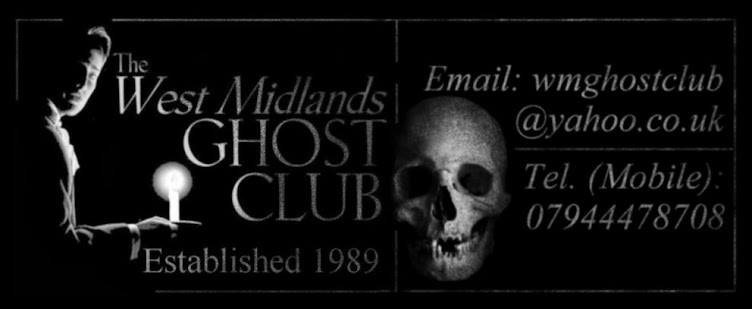Thursday November 4th 2021
Highly intrigued to see this image (above) posted on social media quite recently. While no real detail of the locality concerned can be seen, it was supposedly taken at a site called Wallington Pool - on Wallington Heath - in Bloxwich, on the Northern-most edge of Walsall Borough.
Wallington Heath itself, as many might already know, is the site of a reasonably famous 'ghost story'... that of the Old Kings Arms coaching inn and the 'bale of stolen cloth'....
The Kings Arms once stood just off the Stafford Road, on the aforementioned Heath, the thoroughfare being a highly busy route in centuries past. One night, a stagecoach arrived at the inn, carrying - among it's usual array of weary travelers - a young woman with a consignment of valuable cloth. Legend dictates that, during their overnight stay, someone associated with the inn (many versions of the story say it was a stable hand), decided to steal the cloth from the unfortunate girl and, in the process, murdered her! No one was ever convicted of the crime and, in the years that followed, stories of a sad, ghostly girl - seen weeping under a tree, next to a nearby pool, were reported. (*Some references say that, during the brutal attack, the assailant somehow 'cut off' the woman's hand... which subsequently 'went missing', for some reason? Personally, I believe this detail to be a simple case of 'borrowing from one story to embellish another', perhaps, and can't help seeing a possible association with the 'Hand Of Glory' story from the White Hart Inn, in Caldmore, Walsall... one of the West Midlands most famous haunted sites!?)
Almost all references to this 'ghost' include the aforementioned 'pool'... but, over the years, a little confusion has developed as to 'which' pool is involved? Most references mention 'Wallington Pool', which stands 50 to 100 yards from the Kings Arms site. As indicated by the map below, another pool - a simple fish pond - is situated 'immediately next to' the Kings Arms location... so, surely, this would have been the most obvious pond for the ghost to appear near? Whichever, both of these pools are still extant today, though - depending on the time of year - the fish pond is often SO covered by foliage and pond scum, it's reasonably hard to identify as a body of water!
While the above story is almost certainly pure fiction - no names, or accurate dates, etc, are ever suggested and there is no historic data to support such a tale - the Old Kings Arms itself was indeed a long-standing feature of the Bloxwich landscape. During the early years of the 20th, however, the coaching inn - already transformed into a private dwelling by this point - was converted into a Convent, for the usage of the Sisters of St Paul of Chartres. With the addition of a Secondary School, built onto the existing complex just prior to 1910, the site stayed in the hands of the sisters until the early 60's, when it finally closed....
In the years following the closure, the entire area was flattened and a fairly up-market housing estate built on the site... and it is here, it seems, that the ghostlore of this particular spot takes a new direction, greatly reflecting on the more recent history of the locality.
In speaking to the partner of a friend around 25 yrs ago - a person that knew the area involved reasonably well - I was told that a close friend of theirs, whose family occupied one of the houses in the aforementioned estate, reported instances of poltergeist activity in their home... along with the appearance of a 'ghostly Nun'!?
Subsequently, other reports of 'phantom Nuns' in the immediate area have surfaced... not only at the site of the former Convent itself, but also in the surrounding region, such as the Nun-like form that we have previously posted about, in nearby King George V Playing Fields, a little distance to the rear of the spot in question! (The account of this latter sighting can be viewed HERE).
In light of these Nun-related sightings, it is interesting to just take another look at the photograph shown at the beginning of this post again. While being under no illusions about the origins of the picture concerned - it's almost definitely nothing more than the breath of the photographer being highlighted by the camera flash - it is rather amusing to have, in scrutinising the pic, turned the image 90 degrees to the right and instantly noticed what appears to be a 'Nun-like face'... complete with head-gear... gazing off towards the left of shot! Lol! (Slightly darkened and sharpened below, purely to enhance the effect concerned!)





